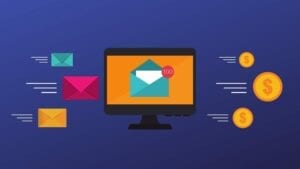In the StoryBrand Marketing Roadmap, we recommend that every company build its email list through a great website, lead magnet, and automated email sequence.
But what in the world is an automated email sequence, and how do you write one?
An automated email sequence is a set of emails, usually five or more, that go out at pre-scheduled times starting immediately after someone subscribes to your list.
This may sound complicated, but automated email sequences are quite easy to set up, and they are an incredibly powerful marketing tool. They are very low cost, and the best part is they work 24/7 with almost no maintenance requirement.
How do you write an automated email sequence?
The goal of an automated email sequence is to transform casual browsers into paying customers. To do this, you need to meet them where they are. Many, if not most, have probably only just heard about you for the first time. Show them you are in business for them and committed to their success. Next, walk them through each step in the trust-building process. Give them genuine reasons to trust you more and more. Finally, ask for the sale. Now that you’ve worked hard to establish trust and authority give them an offer to either accept or reject.
Here are a few pointers for your email sequence.
- Add lots of value. Give, give, give. If you come out of the gate asking them to buy something, they are probably going to hit unsubscribe. You need to earn their trust, and the best way to do that is to give them more valuable content to help them solve their problem.
- Talk about their problem. You can’t go wrong by talking about your customer’s problem, how it makes them feel, and why that’s just plain wrong. You can hit the problem from multiple angles. Then, empathize with them in their problem and show them the way out!
- Talk about the elephant in the room. What are the common objections that keep people from buying your product or service? Acknowledge the most common one (or more if you’d like, but go easy on them), and help them overcome it.
- Share testimonials from your past customers. Share the triumphs of previous customers. Tell their stories (or let them tell it in their own words). And celebrate their successes. Seeing someone achieve the same transformation I’m longing for is the fastest way to get me to buy your product or service.
- Ask for the sale. At the end of the sequence (or at least after a few value-adding, rapport-building emails have gone out), ask for the sale. Layout the stakes, and call them to action. They will have a much better relationship with you than the first time they were on your website and are much more likely to buy now.
How long should it be
There’s no magic formula here, but you can start with a set of 5 emails. This is usually enough to honor the buying cycle and move the relationship forward. That said, you can make a sequence as long as you’d like. Just make sure you stay on narrative. Don’t throw everything you have at them and hope they can make sense of it. Be intentional and do the heavy lifting of creating clarity for them.
How much time should you put in between emails?
The first email should always hit the moment they sign up. Give them some super valuable content or a special discount right there on the spot.
Here’s a pro-tip. Tell them the email is coming before and when they signup. You are more likely to get legitimate contact information that way.
After that first email, it starts to become a judgment call and depends mostly on how quick buying decisions are made in your industry. When I worked with a personal injury law firm, we decided to send an email immediately and then one email per day for the next four days, and if anything, those were spread out too much. When you’re injured, you need help quickly. To honor that, we gave them the content quickly as well.
Other industries have lengthy sales cycles. In that case, you may want to spread your emails out to 1 per week or even further. If your just not sure, one interesting suggestion is to follow the Fibonacci number sequence 1, 1, 2, 3, 5. That would be the day of, Next day, 4th day, 7th day, 12th day. The sequence would hit the hardest when they were most engaged, then ease them down into your regular monthly or weekly touchpoint.


 Who Owns Your Company Culture?
Who Owns Your Company Culture?